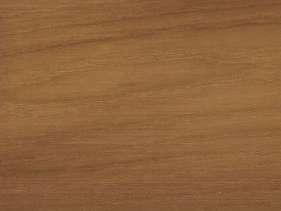
Red Mulberry (Morus rubra)
Family: Moraceae
Common names: Moral, Mulberry, Red Mulberry
Distributed in: Canada, United States (North America)
Distribution overview: The tree prefers moist soils in hardwood forests, and occurs in British Columbia, Alabama, Arkansas, Delaware, Georgia, Iowa, Indiana, Kansas, Kentucky, Louisiana, Maryland, Michigan, Ontario, Florida, Missouri, Mississippi, North Carolina, Great Smoky Mountain National Park, Massachusetts, Connecticut, Illinois, Nebraska, New Jersey, New York, Ohio, Oklahoma, Pennsylvania, Rhode Island, South Carolina, Tennessee, Texas, Virginia, Vermont, Minnesota, Wisconsin, and West Virginia.
Common uses: Baskets, Building materials, Caskets, Cooperages, Foundation posts, Interior construction, Interior trim, Millwork, Moldings, Posts, Stakes, Trimming, Wainscotting
Product sources: Red mulberry is of little commercial importance as a source for lumber because of its small size and scattered occurrence. It is rarely available from lumber dealers, but can be obtained in small quantities for small projects. The trees are especially available in northern Virginia where it is considered a pest tree and disposed of as firewood.
Environment profile: Abundant
This species is suspected to be either Extinct, Endangered, Vulnerable, or Rare within its range in Minnesota. It has officially been classified as Rare in the state of Michigan, and Vulnerable in the state of Vermont.
Tree size: Trunk diameter is 150-200 cm
Colors: the heart isYellow, Yellow to golden-yellow to orangeand the sapwoodYellow, Yellowish.The grain isStraight, the textureMedium coarse to coarseand the lusterMedium
Natural durability: Susceptible to insect attack, Very durable
Odor: No specific smell or taste
Kiln Drying Rate: Slow
Drying Defects: Distortion, Splitting
Ease of Drying: Variable
Comments: Red mulberry is rather weak and is not recommended for applications where strength is of primary concern. The wood is highly suitable for furniture if it is processed and dried properlyWeak
Blunting Effect: Moderate
Boring: Fairly easy to very easy
Carving: Fairly Difficult to Very Difficult
Cutting Resistance: Moderate to saw
Gluing: Fairly Easy to Very Easy
Mortising: Fairly Easy to Very Easy
Moulding: Fairly Easy to Very Easy
Movement in Service: Fairly Easy to Very Easy
Nailing: Tends to split during nailing, Very Good to Excellent
Planing: Fairly Easy to Very Easy
Resistance to Impregnation: Resistant sapwood
Response to hand tools: Fairly Difficult to Difficult to Work
Routing recessing: Fairly Difficult to Very Difficult
Sanding: Very Good to Excellent Results
Veneering qualities: Veneers easily, Veneers moderately easy
Steam bending: Unsuitable
Screwing: Good screw holding properties, Very Good to Excellent Results; Turning: Fairly Easy to Very Easy
Painting: Fair to Good; Polishing: Very Good to Excellent; Staining: Very Good to Excellent; Varnishing: Fairly Easy to Very Easy;
- Numerical data Metric
- Numerical data English
- Strength properties
- References
 |
 |
 |
 |
| Item |
Green |
Dry |
Metric |
| Specific Gravity |
|
|
|
| Density |
|
|
kg/m3 |
| Bending Strength |
|
|
kg/cm2 |
| Crushing Strength |
|
|
kg/cm2 |
| Hardness |
|
|
kg |
| Impact Strength |
|
|
cm |
| Shearing Strength |
|
|
kg/cm2 |
| Stiffness |
|
|
1000 kg/cm2 |
| Tangential Shrinkage |
|
|
% |
| Radial Shrinkage |
|
|
% |
| Weight |
|
|
kg/m3 |
| Maximum Load |
|
|
cm-kg/cm3 |
| Toughness |
|
|
cm-kg |
| Static Bending |
|
|
kg/cm2 |
|
 |  |  |  | | Item | Green | Dry | English | | Specific Gravity | 0.55 | | | |
Kline, M. 1985. Morus rubra - Red mulberry. In A Guide to Useful Woods of the World. Flynn Jr., J.H., Editor. King Philip Publishing Co., Portland, Maine. 1994. Page 239-240.Little, E.L.1980.The Audobon Society Field Guide to North American Trees - Western Region.Published by Arthur A. Knopf, New York.Panshin, A.J. and C. deZeeuw. 1980. Textbook of Wood Technology, 4th Edition. McGraw-Hill Series in Forest Resources. McGraw-Hill Book Company, New York.WCMC. 1992. Conservation Status Listing: Trees and Timbers of the World. World Conservation Monitoring Center (WCMC, Plants Program, 219 Huntingdon Road, Cambridge, CB3 ODL, United Kingdom.
|








